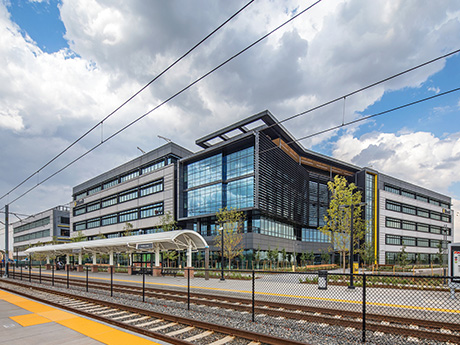By Michael Brumley, Project Executive, Kiewit Building Group AT
The pandemic sent ripple effects throughout the construction industry. Along the way, it also heavily influenced and impacted the way employees in the workforce now operate and interact. With COVID prompting a shift in remote work, many are wondering if it’s beneficial to go back to the office full-time, adopt a hybrid approach or forgo investing in office space altogether.
There are many justifications for investing in office space when you consider variables like productivity, industry-specific jobs or trades, and overall employee satisfaction and benefits. The distinction is you need to invest in spaces that are successful for employers and employees alike.
It’s All About the Benefits
The pandemic proved work can be done anywhere as long as Wi-Fi is available. So, how can companies entice employees to work at an office once the investments have been poured into developing the physical space?
According to a survey from McKinsey on consumer interest and purchasing power, 79 percent of respondents said they believe wellness is important while 42 percent consider it a top priority. Consumers in each market studied reported a substantial increase in the prioritization of wellness over the past two to three years.
Companies are taking note as employees continue to prioritize their physical and mental health. Many employers now seek office space with the potential to build in-house yoga studios, state-of-the-art gyms and designated outdoor space for employees to take mental breaks throughout the day. The design elements for going back to the office are critical with many offices also incorporating ways to mimic working from home in the office.
Unfortunately, it’s going to take a lot more than amenities to entice employees. People want to make their morning commutes to work as seamless as possible while working in an area in close proximity to their favorite restaurants, shops and activities. These are the very reasons that make downtown cores and up-and-coming regions like Metro Denver so desirable and competitive.
That’s why we created the two-building, 400,000-square-foot RidgeGate campus in Lone Tree, Colo., with employee preferences and habits in mind. RidgeGate encompasses all the touchpoints employees want as they make their way back to the office. This includes a gym, cycling studio, and cafeteria that offers breakfast, lunch and outdoor spaces. Transit is another priority for commuting employees, which is why we chose a location next to the Sky Ridge light rail station.
RidgeGate was designed with high-quality materials that would not only enhance the working lives of employees, but set the campus up for success. Glass doors, for example, were placed throughout the office space to boost collaboration and creativity among employees. The gym and outdoor spaces not only provide employees with opportunities to disconnect from the workday but create a way for employees to socialize and team build.
Shaping for Success
Forward-looking companies are finding ways to be nimble, allowing their employees to adopt hybrid schedules and use their office space as needed. Plus, the reintegration of going back to the office has its benefits. There is a boost in collaboration, company culture is solidified and a stronger bond is created among employees. The office also allows for a clear boundary between life and work – a fine line that tended to bleed over during the pandemic as many employees reported burnout when we all worked from home.
The future of office space will now revolve around employees’ needs and will prove to be successful as people begin to return to the office. By providing employees with the space needed to get their work done while giving them amenities that they desire, dedicating your investments to a physical office will be money well spent and see returns for years to come.


